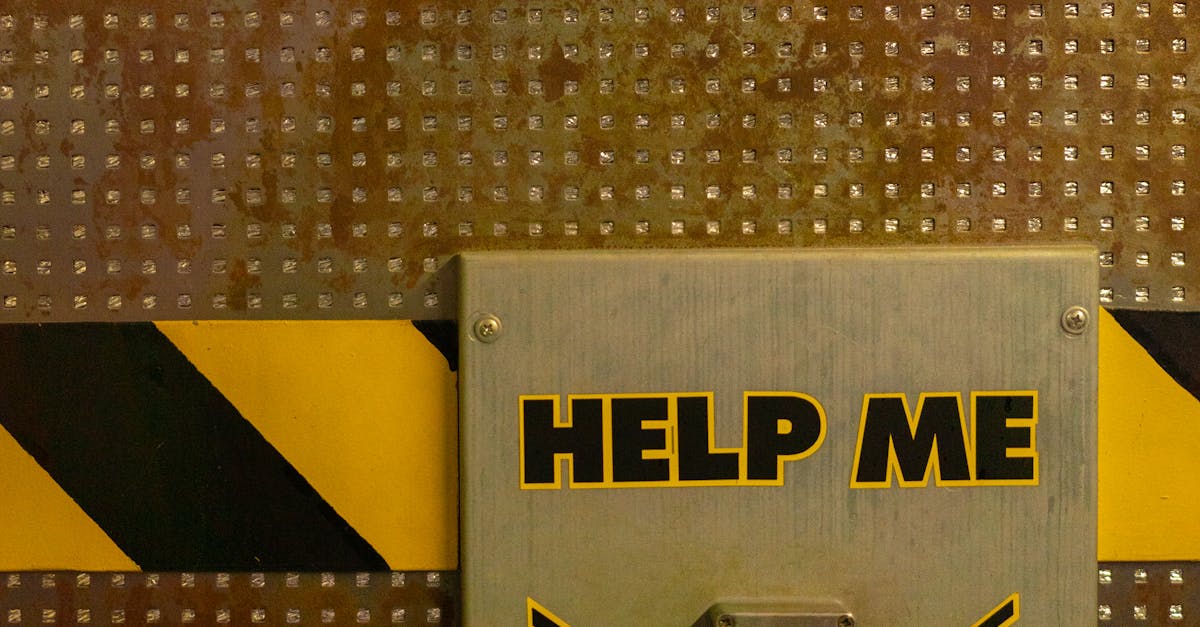
Table Of Contents
The Need for Toilet Replacement
Over time, toilets can suffer from various issues that compromise their functionality. Frequent malfunctions, such as persistent leaks or continuous running, can not only be inconvenient but may also lead to increased water bills. While toilet repairs may address some problems temporarily, aging fixtures may require more frequent maintenance, signaling the need for a replacement.
Modern toilets often boast improved designs and enhanced efficiency, making them a worthwhile investment. Issues like a cracked bowl or an outdated model can lead to inefficiencies, wasting both water and money over time. Moreover, addressing ongoing toilet repairs can become financially burdensome, prompting homeowners to consider a long-term solution through replacement.
Situations That Warrant Replacement
Several scenarios can indicate that replacing a toilet might be a more prudent choice than continuing to invest in toilet repairs. An older toilet that frequently requires fixing may suggest underlying issues, not just with the unit itself but potentially with the plumbing system. If multiple components have already been replaced or repaired, further maintenance could lead to increased costs over time.
Additionally, toilets that show signs of severe damage, such as cracks or leaks, present a valid reason for replacement. Leaking toilets can lead to water damage in the surrounding area, creating further expenses beyond the unit itself. In some cases, older models may not meet current water efficiency standards, making replacement not just a matter of functionality but also of sustainability and cost-effectiveness.
Costs Associated with Replacing a Toilet
When considering the costs associated with replacing a toilet, it's essential to evaluate several factors, including the price of the new unit and installation expenses. A typical toilet can range significantly in price based on brand, style, and features, with basic models usually starting under a hundred dollars, while high-efficiency or designer options can surpass several hundred dollars. In addition to the cost of the toilet itself, homeowners should also account for potential plumbing changes, which can increase the overall expense if modifications are necessary to accommodate the new fixture.
Installation costs also play a crucial role in the financial assessment. Depending on the complexity of the installation, a plumber may charge anywhere from $100 to $300 for labor. In contrast, DIY enthusiasts can save some money by opting for a self-installation, although this requires a level of comfort with plumbing tasks. Ultimately, when weighing the choice between toilet repairs and a complete replacement, the cumulative costs must be balanced against the expected longevity and performance of a new toilet.
Breakdown of Expenses for a New Toilet
When considering the breakdown of expenses for a new toilet, several key factors come into play. The price of the toilet itself varies widely based on style, brand, and features. Basic models can start around $100, while high-efficiency or luxury options may reach $500 or more. In addition to the cost of the toilet, homeowners should account for installation expenses. Professional installation can range from $150 to $300, depending on the complexity of the job and local labor rates.
Another cost consideration is necessary plumbing adjustments. If your existing plumbing requires modifications to accommodate the new toilet, this can add to the overall expense. Homeowners must also think about any potential toilet repairs needed before making a replacement decision. Frequent repairs on an old toilet often incur costs that, over time, could exceed the investment in a new unit. Thus, a careful analysis of these expenses helps determine the financial practicality of a new toilet versus ongoing repairs.
Advantages of Replacing Your Toilet
Replacing a toilet often leads to numerous advantages that go beyond the initial cost. Many older models use significantly more water per flush, which can result in high water bills. Newer toilet designs focus on water efficiency, ultimately leading to reduced utility costs over time. This improved performance can be especially beneficial for households that experience heavy usage, transforming a basic fixture into an eco-friendly choice that supports sustainability efforts.
In addition to cost savings, the reliability of a new toilet minimizes the likelihood of frequent toilet repairs. Older toilets may require ongoing maintenance due to wear and tear, leading to inconvenient and sometimes costly plumbing issues. With a new model, homeowners can enjoy peace of mind, knowing that their investment is less prone to malfunctions and will function efficiently for years to come. This reliability contributes to a more comfortable living environment, reducing the frustration that often accompanies plumbing problems.
LongTerm Savings and Efficiency
Replacing an old toilet often leads to significant long-term savings, primarily due to increased water efficiency. Newer models are designed to use less water per flush, which translates into lower utility bills. If a toilet is consistently requiring repairs, these costs can add up over time. An efficient replacement can also contribute to reduced maintenance expenses, as modern toilets are built with advanced technology that limits issues such as leaks and clogs.
Additionally, a new toilet can enhance home comfort and hygiene. Upgraded efficiency features, such as dual-flush options, allow homeowners to choose how much water they use, further contributing to savings. Relying on frequent toilet repairs can be both inconvenient and costly. Investing in a replacement not only ensures cleaner operation but also aligns with eco-friendly practices that can elevate the overall value of a home.
FAQS
How do I know if my toilet needs to be replaced?
You should consider replacing your toilet if it's constantly running, leaking, or if the tank or bowl is cracked. Age and outdated models can also warrant a replacement, especially if they don't meet modern efficiency standards.
What are the average costs associated with replacing a toilet?
The average cost to replace a toilet can range from $150 to $800, depending on the type of toilet, labor costs, and any additional plumbing work that may be needed.
Are there any benefits to replacing an old toilet with a new one?
Yes, replacing an old toilet can lead to long-term savings on your water bill due to improved efficiency, as newer models use significantly less water per flush compared to older ones.
Can I repair my toilet instead of replacing it?
In many cases, you can repair issues such as a leaky flapper or a broken handle. However, if the toilet is older and requires multiple repairs, replacement may be more cost-effective in the long run.
What factors should I consider when deciding between repair and replacement?
Consider the age of the toilet, the cost of repairs versus replacement, the frequency of issues, and potential water savings from a new model when making your decision.



















